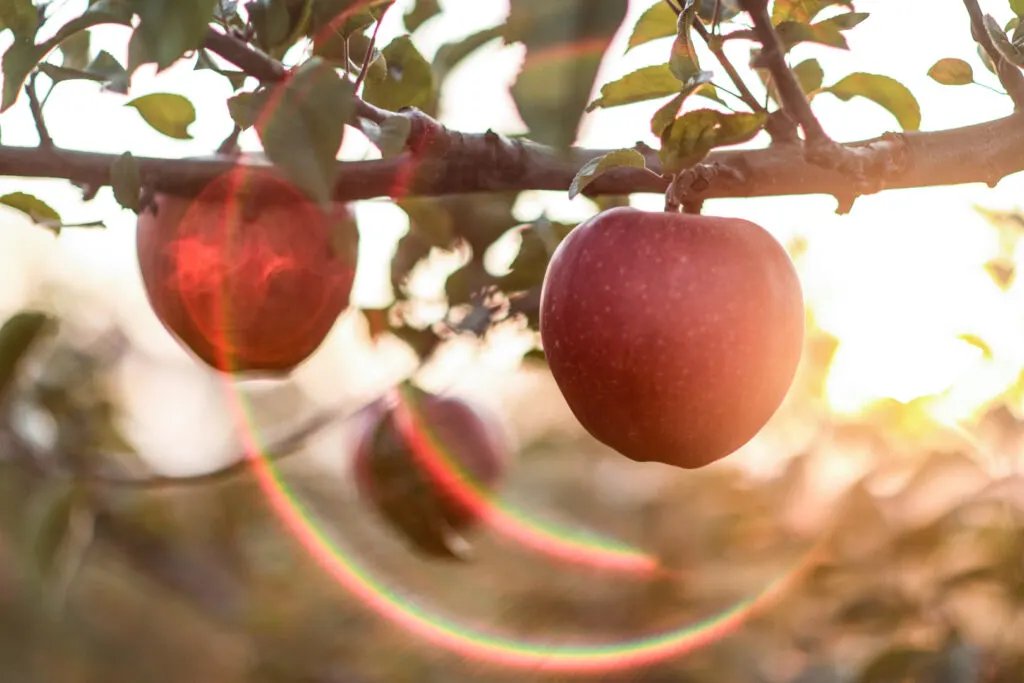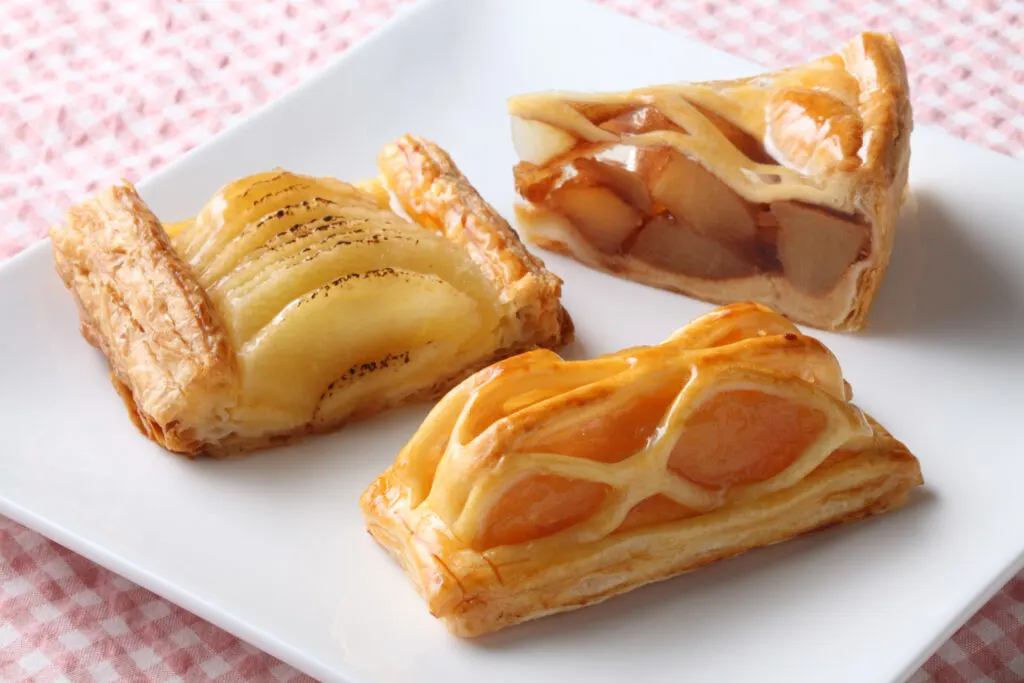You’ll almost never see them today, but Japanese apples (waringo, 和林檎, わりんご, ワリンゴ) were cataloged in the Japanese dictionary Wamyō Ruijushō (和名類聚抄, わみょうるいじゅしょう) more than a thousand years ago.
Four to five centimeters in diameter and yellow or red skinned, they were grown, eaten, and used for altar offerings through the Edo period (mid 1800s) but went out of fashion with the introduction of their bigger, sweeter cousins, the Western apple, or seiyō ringo (西洋林檎, せいようりんご, セイヨウリンゴ), introduced to Japan right at the beginning of the Meiji Period.
The Meiji Period (1868-1912) was a time of great change in Japan, with the ending of the feudal/shogun system and the restoration of imperial rule. With the toppling of the military government, the elite class consisting of around 1.9 million people lost their status. Many turned to government jobs, became merchants, or even farmers.
Thousands of samurai in the then-Hirosaki Domain (in modern-day Aomori) were unable to find work, and they were encouraged to grow apples by the prefecture, which received its first saplings, imported from the United States, in the 1870s. One of the most famous to take up the cause was Tatee Kikuchi, a former Hirosaki Domain retainer, called the father of Aomori apples.

Table of Contents
Why Apples in Aomori?
Aomori, with its abundant farmland, cool climate, and low rainfall, turned out to be an excellent place to raise apples. The long, cool season means that Aomori apple farmers can produce firm, stable fruit. Production slowly ramped up in the decades that followed, and new rail routes made transport to other parts of the country, and even foreign ports, more feasible.
Today, Aomori produces about 60% of the country’s apple crop, weighing in at about 463,000 tons. The tantalizing fruit may be the prefecture’s most famous export, and it’s a point of pride: in addition to numerous apple products and apple tourism ventures, the prefectural flower is the apple blossom.

Aomori Apple Varieties
If you’ve been to a supermarket in the last few decades, you’ve probably heard of Aomori’s most famous apple, the Fuji.
Though the name might lead you to believe that the variety was born farther south, it was in fact developed in Aomori, in the city of Fujisaki, at the Aomori Prefectural Apple Research Station. Registered as a variety in 1962, Fuji is a cross between the Red Delicious and (Virginia) Ralls Janet apples. It’s Japan’s, and Aomori’s, most famous and most popular apple, and popular around the world, ranking in the top five in the US and accounting for 70% of the apples produced in China (the world’s #1 apple producer).
The Fuji has an excellent storability, but does require careful tending, with each apple wrapped in an individual bag to protect it from pests, improve storage, and control coloring.
In Japanese supermarkets, you may also see a variety called “Sun Fuji.” These are the same variety, except Sun Fuji are not bagged, and have a more natural ripening process, resulting in golden streaks, as compared to the Fuji’s overall rosy hue.
In total, there are around 50 varieties of apples grown in Aomori. The varieties tend to be sweet, as preferred by the Japanese market, versus tart, which is more preferred in Europe. Tarter varieties do exist however. Look out for:
| Toki | Yellow-skinned, crisp, sweet, mildly tart. |
| Sekai Ichi | Large and mild, bright red. |
| Jona Gold | Red-skinned, tart, crisp. |
| Shinano Gold | Yellow, juicy, quite crisp, sweet-tart. |
| Mutsu | Sweet and mild. This apple is, visually, the platonic ideal of an apple, so much so that its visage is used for the apple emoji. 🍎 |
| Kurenai no Yume | Dark red skin, pink flesh, extremely tart. If you’re looking for a Japanese variety for pies, this is your pick. |
| Kotoku | Small, yellowish-red. Very fragrant, crisp, high level of “honey,” low yield but high demand. |
Got that? If you think you know your Mutsus from your Sun Fujis, try this apple tetris game created by Aomori Tourism, called Puyo Ringo.
Apples in Aomori, delicious in many forms
With all these apples alongside Aomori’s other agricultural products (the prefecture is one of the few in Japan with a self-sufficiency rate exceeding 100%, meaning that they grow more food than they consume), it’s no surprise that Aomorians are cooking up all kinds of delicious ways to eat– and drink– their harvest.

If you’re like me, you might be thinking: give me the pastries! (Just me?) Head to Hirosaki to try their famous apple pie. More than 40 shops sell the flaky pastry stuffed with sweet, juicy slices. I love the pastries at Boulangerie Four, but you can eat your way across town following the Apple Pie Guidebook provided by Hirosaki Tourism. There’s even an Apple Pie Taxi to help ferry you around, complete with apple pie concierge drivers who can advise you on the best places to satisfy your sweet tooth.
Speaking of sweets, don’t miss the ‘Asa no Hakkoda’ apple cheesecake made by Arpajon, with locations in Aomori City and Hachinohe City.
You can also find apples in liquid form. Cold, sweet apple juice sold in glass bottles can be found all over the prefecture. For adults, try apple brandy, or apple cider (cidre); Kimori Dry Cidre and Moriyama-en Tekikaka Cidre are especially good.
Aomori Apple Festivals and Fun Bits
With apples playing such a large part in the prefecture’s economy and diet, it’s no surprise that the fruit plays a part in some tourist attractions, too.
In Aomori City, A Factory has a line up of Aomori food souvenirs and restaurants, including a good selection of ciders and an on-site cider studio where visitors can watch the brewing process, followed by samples.
At Hirosaki Apple Park, dozens of varieties are grown over five hectares, and visitors can try apple picking in the autumn. You can also sample dishes like apple curry and apple sundaes.
Over in the Itayanagi Town Furusato Center, the theme is apples, including a grove with over 100 varieties, a mini apple museum, a craft center where visitors can make apple sweets and try dyeing and weaving using apple tree leaves and bark; and cafes and shops. In August, the town holds the Apple Lantern Festival, to pray for good harvest.


Hungry yet? Aomori apples are beckoning. Don’t bother trying to resist the temptation.
Pin me for later


Selena Takigawa Hoy is a Japanese-American writer living in Tokyo. She has lived over half her life in Japan and has explored the country from Hokkaido to Okinawa. She has written for Travel + Leisure, BBC, Atlas Obscura, CNN, and many others.

Judy
Saturday 17th of December 2022
Thank you! Japanese apples are lovely in their own right but l had despaired of ever finding anything like my beloved Granny Smiths. I’m taking your guide with me next time l go apple shopping!
Selena
Monday 19th of December 2022
@Judy, Go for the Kurenai no Yume if you can find them! They are cool looking - pink inside! Your second picks are the Golds (Jona and Shinano) and the Toki, both of which may be a bit tarter than a Fuji.